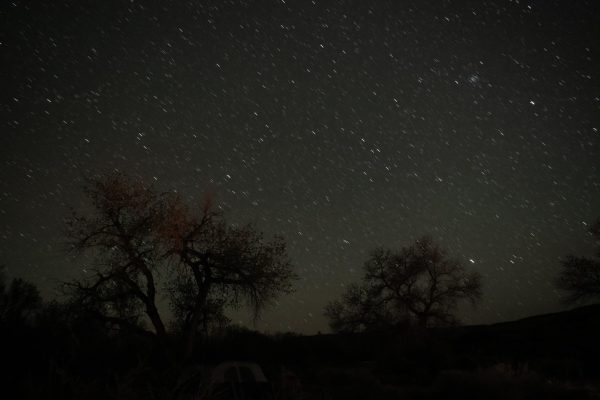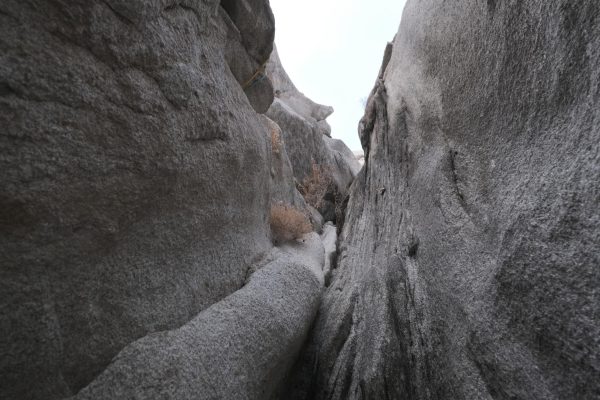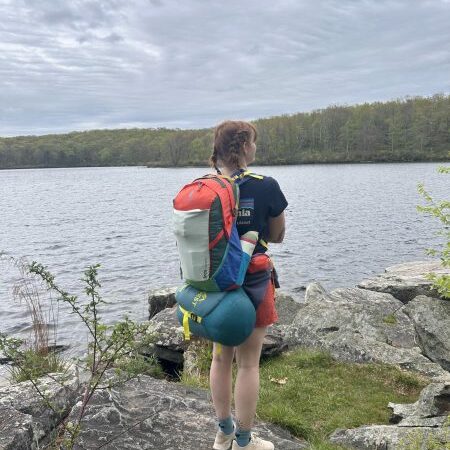The Second Best Kind of Rescue
“Self-rescue is the best rescue” is something I’ve heard at every river safety talk. While overall I agree with the sentiment, my pedantic nature can’t let it go. “If a rescue is necessary, self-rescue is the best rescue” works better for me, but it definitely isn’t as catchy. Anyone who’s done any amount of rescue or first aid training can tell you prevention is far superior. The ability to rescue and provide medical care is pretty limited, especially in the backcountry. On recreational trips, my group carries some extra first aid and rescue equipment, but far less than we would if responding to a rescue.
In the past few years, I’ve become certified in several different rescue disciplines, almost as if I’m collecting more expensive grown-up merit badges. All of these trainings have influenced how I enjoy the outdoors and the steps I take to manage the associated risks more effectively.
In my opinion, anyone who spends much time outdoors should have some sort of training. Wilderness First Aid, for example, is a good starting point. Some people have their curiosity aroused by the class, and decide to become paramedics or doctors. Others are a little disgusted and horrified, and hope they never have to deal with blood or broken bones. When there’s a serious problem in the backcountry, such as a swimmer stuck in a rapid, a skier buried in an avalanche, or a climber stuck on a route hanging in their harness, survival often depends on whether the group can solve the problem on their own. Otherwise, there might not be a patient by the time Search and Rescue arrives. This is why I strongly encourage people to consider appropriate training and competency one of the most important things you can bring with you. Buying a new pair of skis but complaining about the cost of a rescue class isn’t a good look.
Swiftwater Rescue
After discovering my love for whitewater boating, I registered for and completed a swiftwater rescue class. The Mountain Rescue Association says, “your patient is generally stable. Dead or alive, but stable.” Knowing that in a river environment, if someone ends up in serious trouble, they’ll most likely be stable in about ten minutes. I took the class so hopefully we can all be stable and alive.
In the class, I was surprised to learn about many new and exciting hazards lurking on rivers, and how difficult rescue from those hazards is. Even without rapids, swiftly moving water is potentially deadly. Recognizing and avoiding possible hazards is a much better way to stay safe.
We spent most of the day in the river practicing skills. Running some rapids on a riverboard, basically a boogie board, let me feel every little current and eddy in the river. Learning how the river moves such a small craft helped me learn how to better maneuver a large inflatable raft.
The course I took was better than most, taught by an experienced recreational rafter and kayaker. He spent so much time on the water, he had tan lines from his helmet straps. Although many people teach the technique differently, he taught us to focus on moving perpendicular to the current, when making challenging moves in the river. If you’re pointed downstream at all, you’re wasting energy doing what the river will do for you. If you face upstream, you’re fighting a losing battle. If you put yourself in the part of the current that’s going to end up where you want to be, you’re much more efficient with your energy.
Unfortunately, within a month of completing the course, I overconfidently took on the Lochsa River in Idaho at flood stage. Swimming half a mile of serious high-water rapids knocked my ego down to a healthier level.
Cave Rescue
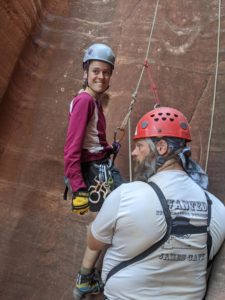 Cave rescue trainings have been my favorite. The past two summers, I’ve participated in weeklong cave rescue trainings. We start at eight in the morning, and run until nine or later at night. It’s exhausting, but rewarding. Instructors are all volunteers, and extremely dedicated. Students are generally a mix of recreational cavers and agency personnel. Some are extremely skilled in above ground rescue, but not as familiar with National Cave Rescue Commission (NCRC) practices. While some people get frustrated, mostly there’s a lot of sharing of knowledge between groups. Last summer, I went to the training more for the social element, rather than the skills.
Cave rescue trainings have been my favorite. The past two summers, I’ve participated in weeklong cave rescue trainings. We start at eight in the morning, and run until nine or later at night. It’s exhausting, but rewarding. Instructors are all volunteers, and extremely dedicated. Students are generally a mix of recreational cavers and agency personnel. Some are extremely skilled in above ground rescue, but not as familiar with National Cave Rescue Commission (NCRC) practices. While some people get frustrated, mostly there’s a lot of sharing of knowledge between groups. Last summer, I went to the training more for the social element, rather than the skills.
Caves are often a very demanding environment to perform a rescue in. Some equipment commonly used above ground is too heavy, bulky, or fragile to be used deep underground, so a lot of our techniques are what some find frighteningly primitive. However, the precision and simplicity of their systems is admirable. We learn to consider simple yet game-changing approaches, such as using a more compact knot so we have more rope to work with. Our preferred method to lower a rescue load is a Munter hitch. The more I use the Munter, the more I adore it. The most important thing they teach is “is it safe, will it work?” Real-life rescues have been brought to a standstill because the team spends half an hour arguing about how to save five minutes.
One of my favorite courses provided by the NCRC is called Small Party Assisted Rescue, or SPAR. Here they focus on teaching how a group can evacuate a mildly broken person (hypothermic, stuck on rope, broken arm, leg or ankle injury, and so on). It’s basically a class on how to MacGyver your gear and start moving someone toward the exit. Because of how little equipment the SPAR techniques require, I would highly recommend the course to anyone who plays on rope. Climbers, canyoneers, mountaineers, cavers, and even professional rope access techs will probably find the content valuable.
Emergency Medicine
Emergency medicine has been one of the most significant fields for me. I volunteer with an ambulance department in a quiet community, so I’m not routinely traumatized by the violence, dismemberment, or overdoses high volume service areas see. Witnessing the actual chaos, hearing the moans or screams of pain, and seeing the scared friends and family are not things you can experience in the classroom. This real-world experience has helped me be more able to stay calm and collected in situations where it is difficult but essential to do so. Years ago, the sight of blood, especially my own, would cause me to feel faint or woozy. I handle it better now, which is a pretty significant accomplishment.
When I took a Wilderness First Responder class, I thought I was learning how to be safer in the backcountry. Now, I’m planning on certifying as a paramedic and working in EMS and disaster management.
The Third Best Rescue
Avoiding a rescue is best, self rescue is second best.
Of course, some incidents require outside help. Trying to self-rescue someone with a broken femur is bad for you and bad for them. However, the vast majority of injuries in the outdoors are fairly minor, and with some training and practice, you’ll be able to make progress in the right direction instead of waiting for help.
Some outdoor enthusiasts learn enough technical skills to get by, while others turn it into a hobby. I have no professional reason to carry the certifications I do, but I enjoy it, even though I sometimes spend more time practicing, researching, or talking about technical skills instead of actually going into the backcountry and gaining some experiential education.
For me, this started as an effort to be more self-sufficient in the wilderness and has ended up shaping my hobbies and career significantly. While I don’t currently have time to commit to a Search and Rescue team, I look forward to joining a team and gaining practical experience in the field, where the real learning happens.
A very satisfying moment happened earlier this year. Finally, I encountered a slot canyon too narrow for me to make it through. While a friend and I were waiting, the rest of our party finished the canyon and hiked to the rim, to provide us with a rope to escape with.
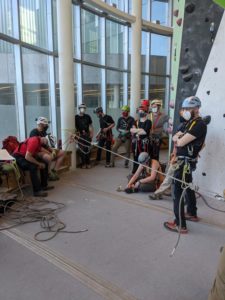
Anticipating the need to join ropes together and ascend with a partner who didn’t know how to ascend, I constructed several strategies to extract both of us. Most satisfying to me was the ability to come up with multiple solutions, in case one didn’t work.
The skills in these various disciplines tend to overlap, as do the people who participate. In all of them, I have opportunities to learn how people hurt themselves doing the stuff I love, so I’m better able to protect myself and those I care about from making the same mistakes. For this reason, I recommend training to backcountry enthusiasts. For those who are intimidated by the traditionally male-dominated classes, more and more training opportunities are being offered for those who identify as non-male. Learn how to handle things when the brown stuff hits the whirly thing in the air, and more importantly, learn how to avoid the mess in the first place.
The post The Second Best Kind of Rescue appeared first on Wasatch Magazine.
Source: https://wasatchmag.com/the-second-best-kind-of-rescue/

